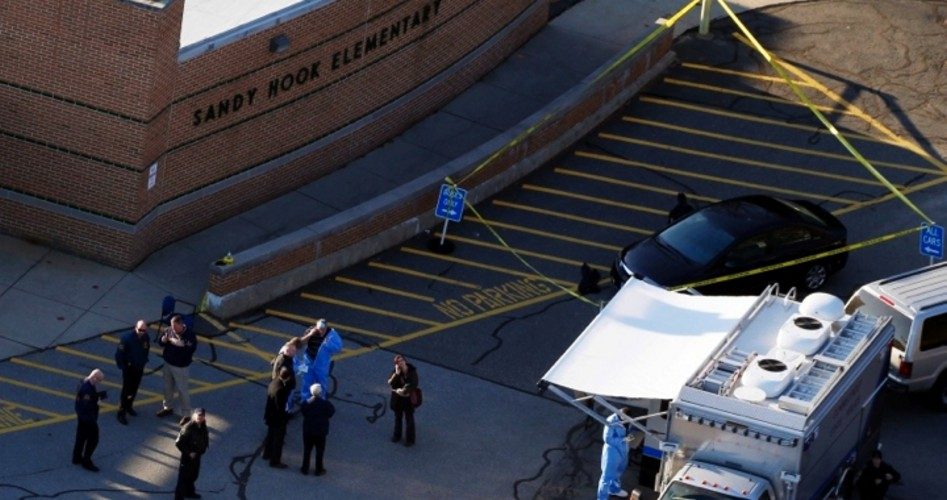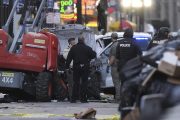
More than 10 months after Adam Lanza massacred 26 students and faculty and committed suicide at Sandy Hook Elementary in Newtown, Connecticut, questions still abound in the midst of conspiracy theories and prolonged speculation. The October 21 edition of The Hartford Courant, which has been following the story closely since the mass murder last December 14, ran an editorial complaining about State Attorney Stephen Sedensky’s delay in releasing the full investigative report, originally expected by the end of June. In the meantime, says the Courant, details continue to leak, feeding “the sick conspiracy mill and prolong[ing] the pain.”
But the editorial admits Sedensky’s stonewall is prompting a host of relevant questions. What have investigators found that prevents publication? Can investigators explain what prompted Adam Lanza’s murderous actions?
Along with the delayed report, other circumstances add to general mistrust. Why is the school building being demolished, access to the site closed to the public, and even photos and videos banned? The Courant continues:
Also raising suspicions are the confidentiality agreements that workers at the elementary school are being required to sign. They are tearing down the school to make way for a new one, a move The Courant supports. But pledging workers to secrecy about what they see is excessive and unlikely to succeed. At this rate the school may be razed before the report is out. What if the document raises questions about the building?
Then there is the subject of the 911 calls. On September 30, the Los Angeles Times reported that Sedensky is appealing the Connecticut Freedom of Information Commission’s order to release the 911 recordings from the school shooting. Sedensky petitions for “sensitivity toward victims’ families.” Yet the Times notes, “The secrecy is striking in light of the quick release of information — from 911 recordings to pictures and video — in other notorious crimes.”
Perhaps most important are the results of Lanza’s toxicology tests, conducted by the Connecticut medical examiner in the weeks after the shooting to check for the presence of drugs in his system. The medical examiner released Lanza’s autopsy findings, which showed nothing of note, less than one month after the rampage, but what of the drug test results?
In May, the Huffington Post reported that Lanza’s toxicology tests showed no evidence of alcohol or drugs, illegal or prescription. However, the Post was not reporting official test results. Instead, this news was revealed by an “official close to the investigation” who spoke on condition of anonymity because he was “not authorized to publicly disclose the information.” The report also stated that warrants revealed no evidence of drugs or medications at the Lanza home, though authorities found “medical, psychiatric and prescription records” there. Unsurprisingly, the contents of these documents remain undisclosed.
However, it appears Huffington’s source may have been mistaken. The parent advocacy group AbleChild has been battling for months to obtain Lanza’s psychiatric drug history. During a recent Freedom of Information Act hearing in the case AbleChild vs. Chief Medical Examiner, Connecticut attorney Patrick B. Kwanashie argued against releasing the toxicology test records because they could “cause a lot of people to stop taking their medications — stop cooperating with their treating physicians just because of the heinousness of what Adam Lanza did.”
Kwanashie opined that AbleChild is requesting the information for illegitimate reasons. “Even if you can conclusively establish that Adam Lanza — his murderous actions — were caused by antidepressants, you can’t logically from that conclude that you know others would commit the same actions as a result of taking antidepressants.”
On the contrary, AbleChild argues that release of the results will promote informed consent and public health. Patricia Weathers, co-founder of AbleChild, lamented, “This opposition comes despite the fact that 31 school shootings and/or school-related acts of violence have been committed by those taking or withdrawing from psychiatric drugs resulting in 162 wounded and 72 killed,” with no federal investigation into the link between psychiatric drugs and such violence.
If psychiatric drugs are indeed strongly linked to such violence, this could challenge the federal government’s narrative that guns are the problem and more gun control is the solution. Perhaps this explains the stonewalling of the investigation.
Photo of officials outside Sandy Hook Elementary school after the shooting on Dec. 14, 2012: AP Images




